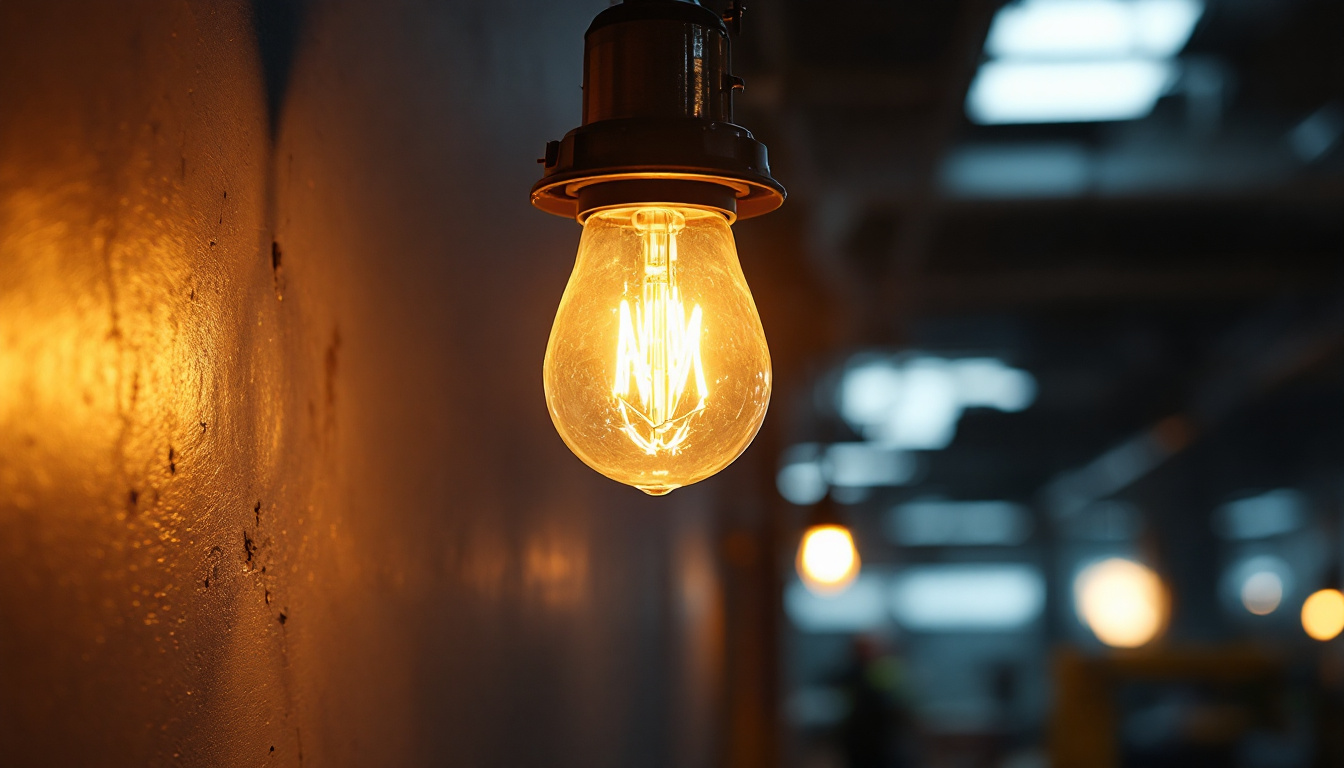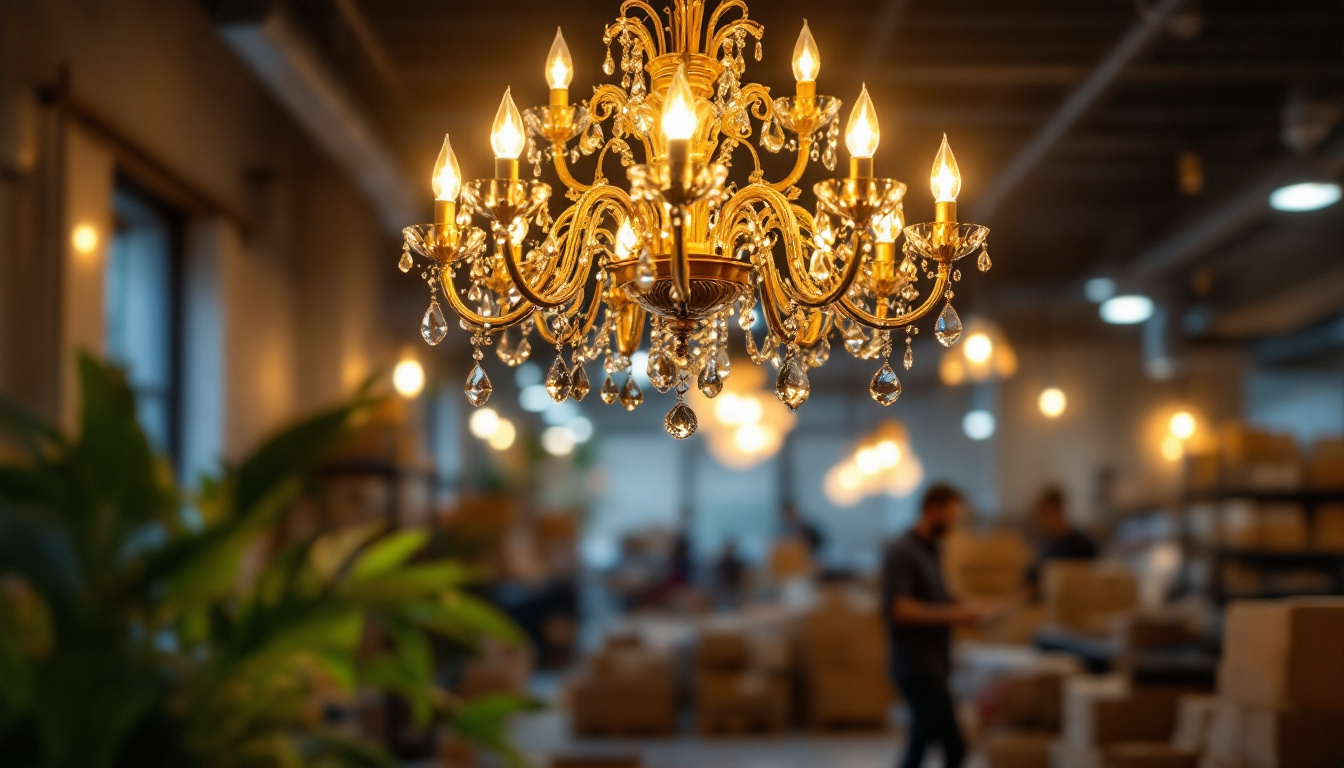

In the ever-evolving world of lighting technology, high pressure sodium (HPS) bulbs have established themselves as a reliable choice for various applications. For lighting contractors, understanding the advantages of HPS bulbs can lead to significant cost savings and enhanced project outcomes. This article delves into the benefits of high pressure sodium bulbs, their applications, and how they can help lighting contractors optimize their operations.
High pressure sodium bulbs are a type of gas discharge lamp that emits light when an electric current passes through sodium vapor. They are known for their distinctive yellow-orange glow and are widely used in street lighting, parking lots, and industrial applications. The technology behind HPS bulbs has evolved over the years, making them more efficient and longer-lasting than traditional lighting options.
The operation of high pressure sodium bulbs is based on the principles of gas discharge. When electricity flows through the bulb, it ionizes the sodium vapor, producing light as a byproduct. The high pressure within the bulb allows for a more efficient conversion of electrical energy into light, resulting in higher lumen output compared to other types of bulbs.
One of the key features of HPS bulbs is their ability to maintain consistent light output over time. Unlike incandescent bulbs that dim as they age, HPS bulbs provide stable illumination, making them an ideal choice for outdoor and commercial applications where reliability is crucial. Additionally, the color rendering index (CRI) of HPS bulbs is relatively low, which means they may not accurately represent colors in the environment. However, their strong performance in terms of brightness and efficiency often outweighs this drawback in practical applications.
Lighting contractors can benefit from several advantages that high pressure sodium bulbs offer. These include energy efficiency, longevity, and low maintenance costs. The energy efficiency of HPS bulbs translates to lower electricity bills, a significant consideration for contractors managing large-scale lighting projects.
Moreover, the long lifespan of HPS bulbs—often exceeding 24,000 hours—reduces the frequency of replacements. This longevity not only saves on the cost of new bulbs but also minimizes labor costs associated with changing out fixtures, making HPS bulbs a cost-effective solution in the long run. In addition to these practical benefits, HPS bulbs are also known for their ability to perform well in various weather conditions, making them suitable for outdoor use in both cold and warm climates. Their robust design helps them withstand harsh environmental factors, ensuring that they provide reliable lighting year-round.
Furthermore, high pressure sodium bulbs have a relatively quick warm-up time, reaching full brightness in a matter of minutes. This feature is particularly advantageous in applications where immediate illumination is necessary, such as in security lighting or during nighttime roadwork. As cities and municipalities continue to prioritize safety and efficiency in their lighting solutions, the demand for HPS bulbs remains strong, despite the emergence of newer technologies like LED lighting. The balance of cost, performance, and reliability keeps high pressure sodium bulbs relevant in a rapidly evolving industry.
For lighting contractors, the financial implications of choosing the right lighting technology are profound. High pressure sodium bulbs can lead to substantial cost savings in multiple areas, from energy consumption to maintenance expenses.
One of the most compelling reasons to choose high pressure sodium bulbs is their energy efficiency. Compared to traditional incandescent and fluorescent lighting, HPS bulbs consume significantly less energy while providing comparable or superior light output. This reduction in energy consumption translates directly into lower utility bills for clients, making HPS bulbs an attractive option for budget-conscious projects.
Additionally, many regions offer incentives for the use of energy-efficient lighting solutions. By opting for HPS technology, contractors can not only pass on savings to their clients but also take advantage of rebates and tax incentives that further enhance the financial viability of their projects.
The extended lifespan of high pressure sodium bulbs means that lighting contractors can reduce maintenance costs significantly. The need for frequent bulb replacements is a common expense in lighting projects, especially in installations that are hard to reach or require specialized equipment for maintenance. HPS bulbs, with their long operational life, minimize these challenges.
Furthermore, less frequent replacements mean less downtime for lighting systems, which is particularly important in commercial and industrial settings. Clients appreciate the reliability of HPS bulbs, and contractors can build a reputation for providing high-quality, low-maintenance lighting solutions.
High pressure sodium bulbs are versatile and can be used in a variety of applications, making them a favorite among lighting contractors. Understanding where these bulbs excel can help contractors make informed decisions when designing lighting solutions for their clients.
One of the primary applications of high pressure sodium bulbs is in street and area lighting. Their ability to produce bright, effective illumination makes them ideal for illuminating roadways, parking lots, and public spaces. The warm color temperature of HPS bulbs provides good visibility while minimizing light pollution, which is a growing concern in urban areas.
Moreover, the energy efficiency of HPS bulbs aligns well with municipal goals to reduce energy consumption and lower carbon footprints. As cities strive to become more sustainable, the adoption of HPS technology in public lighting is likely to increase.
In industrial and commercial environments, high pressure sodium bulbs are often used for warehouse lighting, manufacturing facilities, and outdoor security lighting. Their robust design and ability to withstand harsh conditions make them suitable for these demanding applications.
Contractors can leverage the durability and efficiency of HPS bulbs to create lighting solutions that enhance safety and productivity in workplaces. The bright, consistent light output helps reduce accidents and improve visibility, contributing to a safer working environment.
While high pressure sodium bulbs offer numerous benefits, there are also considerations that lighting contractors should keep in mind when selecting this technology for their projects. Understanding these factors can help ensure that the chosen lighting solution meets the specific needs of each application.
One limitation of high pressure sodium bulbs is their Color Rendering Index (CRI), which is lower than that of other lighting technologies such as LED or fluorescent. The CRI measures how accurately a light source displays colors compared to natural light. HPS bulbs typically have a CRI of around 20-25, which may not be suitable for applications where color accuracy is critical, such as retail environments or art galleries.
Contractors should assess the specific lighting requirements of each project and consider whether the lower CRI of HPS bulbs is acceptable for the intended use. In cases where color rendering is a priority, alternative lighting solutions may be more appropriate.
High pressure sodium bulbs also have a longer warm-up time compared to other lighting technologies. While they reach full brightness relatively quickly, they may still take a few minutes to achieve optimal light output. This characteristic can be a drawback in applications where immediate illumination is necessary, such as in security lighting.
Additionally, HPS bulbs do not dim well, which can be a consideration for contractors looking to implement smart lighting solutions or energy-saving strategies. Understanding these limitations will help contractors make informed decisions about the best lighting technology for their projects.
Successfully integrating high pressure sodium bulbs into lighting projects requires careful planning and consideration of various factors. From design to installation, contractors must ensure that they maximize the benefits of HPS technology while addressing any potential challenges.
When designing a lighting solution that incorporates high pressure sodium bulbs, contractors should consider the specific lighting needs of the space. Factors such as the height of fixtures, spacing between lights, and the intended use of the area will influence the overall effectiveness of the lighting system.
It is also essential to take into account the potential for light pollution and glare. Proper placement and shielding of HPS fixtures can help mitigate these issues, ensuring that the lighting solution is both effective and environmentally responsible.
During the installation process, contractors should adhere to best practices to ensure optimal performance of high pressure sodium bulbs. This includes following manufacturer guidelines for fixture placement, ensuring proper electrical connections, and conducting thorough testing after installation.
Training staff on the specific characteristics and maintenance requirements of HPS bulbs can also enhance the longevity and performance of the lighting system. By equipping teams with the knowledge they need, contractors can ensure that their projects stand the test of time.
As the lighting industry continues to evolve, high pressure sodium bulbs remain a staple in many applications. However, advancements in technology are paving the way for new lighting solutions that may challenge the dominance of HPS bulbs.
LED technology, in particular, has gained significant traction due to its superior energy efficiency, longer lifespan, and improved color rendering capabilities. While HPS bulbs still hold their ground in specific applications, contractors should stay informed about emerging alternatives and consider how they can integrate these technologies into their offerings.
By keeping an eye on industry trends and advancements, lighting contractors can position themselves to provide the best solutions for their clients, whether that involves HPS technology or newer, more efficient lighting options.
High pressure sodium bulbs offer a range of benefits for lighting contractors, from energy efficiency and longevity to reduced maintenance costs. Understanding the unique characteristics of HPS technology can help contractors make informed decisions that lead to successful project outcomes.
As the lighting landscape continues to change, staying updated on emerging technologies and best practices will ensure that contractors remain competitive in an ever-evolving market. By leveraging the advantages of high pressure sodium bulbs, contractors can deliver cost-effective, reliable lighting solutions that meet the needs of their clients.
Ready to harness the cost-saving power of high pressure sodium bulbs for your lighting projects? Look no further than LumenWholesale, where we provide lighting contractors with the highest quality, spec-grade lighting products at unparalleled wholesale prices. Say goodbye to local distributor markups and hello to our extensive selection that meets rigorous industry standards. With LumenWholesale, you’ll enjoy the convenience of bulk buying with free shipping, ensuring you get the best value without any hidden costs. Elevate your lighting solutions today by visiting Wholesale Lighting at the Best Value and experience the difference that quality and affordability can make.

Explore the advantages and drawbacks of strip light attachments for lighting contractors.

Discover the essential best practices lighting contractors use to illuminate commercial warehouses efficiently and effectively.

Discover the essential compliance guidelines for solar LED lights that every lighting contractor should know.

Discover why purchasing chandelier lights in bulk from local distributors might not be the best choice.
Get notified when NEW deals are released.
Optimize your budget with wholesale discounts.
Only top-quality, specification-grade lighting products.
No additional costs at checkout - what you see is what you pay.
We understand the unique needs of contractors.